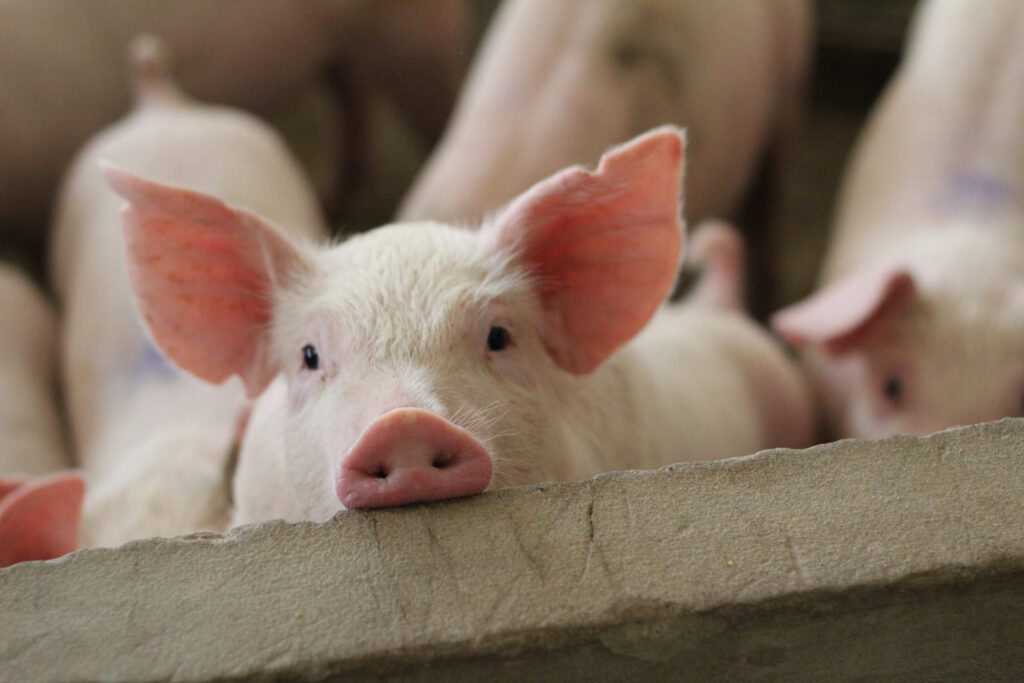Producers must keep PRRS on their radar
7th September 2021
Porcine Reproductive and Respiratory Syndrome (PRRS) is the most important and costly disease on UK pig farms, affecting the performance of sows, sucklers, weaners, growers and finishers. Therefore, it is important producers are aware of the prevalence of this disease and have a detailed control programme in place.

Research by the Scottish Government has found that PRRS could cost as much as £80 per sow and £3.50 per finished pig[1]. With this in mind, it pays to keep PRRS on the radar and have a strict disease prevention protocol in place, which includes a detailed vaccination programme.
Rubén Del Pozo Sacristán, MSD Animal Health UK technical manager for pigs, says PRRS is an endemic disease that is always circulating in pig herds. Here he explains more about the disease, its prevalence on UK farms and how producers can control it.

What is PRRS?
Dr Del Pozo Sacristán explains PRRS is a viral disease that is generally endemic on UK farms, but outbreaks can occur when herd immunity decreases, or new strains enter the herd.
“The disease can affect sows and weaners in different ways, but the biggest impact is the effect it has on the performance of the herd. The clinical symptoms seen in sows are reproductive and can include abortion, infertility, uterus infections, stillbirths, weak-born piglets and increased pre-weaning mortality.
“In weaners, the disease can result in respiratory problems such as coughing, pneumonia and conjunctivitis. All of which can reduce weight gain and the growth efficiency of the pigs, as well as result in increased post-weaning mortality and antimicrobial usage to control secondary bacterial infections,” says Dr Del Pozo Sacristán.
“PRRS virus has a reproduction rate of between 2.5 and 5.2, which means biosecurity needs to be at the highest level to prevent the disease spreading. It can also be transmitted through the air, traveling up to nine kilometres, meaning in pig dense areas, such as East Anglia, it can easily spread between farms.
“The disease can also enter farms via infected animals, trucks or visitors,” he adds.
How to control PRRS on-farm
PRRS is a disease that pig farmers need to learn to live with because it is very difficult to eradicate, particularly in areas where there is a high population of pigs. However, pig producers can keep it under control by having a good disease prevention strategy and thorough vaccination procedure in place.
“Internal biosecurity must be top quality every day to control the reproduction rate of PRRS and hence the spread within the herd,” says Dr Del Pozo Sacristán.
“There are a number of disease prevention methods that can really help. For example, implementing an all-in-all-out system, separating age groups and high biosecurity measures, which incorporates changing boots and overalls between areas, can all reduce the spread.
“You must also be careful not to spread disease when purchasing gilts and sperm or bring the disease back to your farm. Check the PRRS status of the farm they’ve come from and implement quarantine procedures.”
Dr Del Pozo Sacristán adds that it is really important disease prevention measures are implemented as vaccination alone doesn’t solve the problem.
“Vaccination isn’t a silver bullet, but it does provide an insurance policy for pig producers as it reduces the transmission of the virus and severity of the disease and therefore reduces the risk of health and performance issues on-farm,” says Dr Del Pozo Sacristán.
Dr Del Pozo Sacristán explains his plan for PRRS vaccination success.
“Vaccinate sows to reduce the risk of vertical transmission from the sow to the piglet. Also, give boosters regularly to build herd immunity,” he explains.
“Replacement gilts can pose a risk to the herd, but they are also susceptible to any PRRS strain present on new farms. Implement an acclimation programme to protect the gilts by vaccination before they are exposed to the virus that’s present on the farm, so they build immunity before entering the breeding herd.
“With this process, we aim for the gilts to no longer be shedding the PRRS virus when they enter the breeding herd, hence not contagious to the rest of the sows.
“Piglet vaccination is also becoming more popular among producers, as at weaning the piglets are likely to be mixed with other pigs and with increased stress as this time, they are more prone to contracting the virus. Therefore, it’s sensible to vaccinate them at around two weeks of age so they have increased immunity to the disease at weaning, to limit the spread of the virus,” says Dr Del Pozo Sacristán.
Do you know your PRRS status?
To understand the status of PRRS on your farm, diagnostics can be used to test your herd and understand the level of the disease. This can then help inform your prevention and vaccination protocol.
There are two different tests that can be undertaken to identify the presence of PRRS. The PCR (polymerase chain reaction) test identifies if the virus is currently present, and the ELISA test tells you if antibodies are present or not, and therefore if the animal has been exposed to the virus.
A quick guide to PRRS status:
- Unstable means that all animals are exposed to the virus and the virus circulates at birth and therefore it’s important sows and gilts are vaccinated, and the acclimation protocol is reviewed. Piglet vaccination would not be advised in this case
- Active stable means the virus is present in nursery piglets but not in sows. This means that sows still need to be vaccinated and piglet vaccination is useful to reduce the reinfection level
- Inactive stable herds have no disease pressure in the sows or weaners currently, but antibodies can be seen. This means the herd has had exposure to the disease, whether this is from other animals or the vaccination. At this level sow and gilt vaccination is needed and piglet vaccination recommended
- Negative is the ultimate goal as it means the disease is eliminated.
Top tips on managing disease when bringing in new animals
Bringing new pigs onto the farm can pose a high risk to both the new animals and those already present on-farm. Dr Del Pozo Sacristán gives his top tips on managing disease risk when sourcing gilts from other farms to minimise disease outbreaks.
1. Introducing gilts to the herd:
- Breed your own gilts if possible
- If you must source gilts from other farmers, ensure you know the health status of the farm that you are sourcing them from – a herd with a high health status is optimal
- Source all animals from one supplier and limit the number of times you bring new stock onto the farm to a maximum of four times a year
- Avoid stress when moving the animals by avoiding long journey’s and ensuring pigs have access to adequate ventilation. Stressed animals can have a reactive latent infection, making them unwell a few days after arrival.
2. Quarantine:
- Any new animals brought onto the farm should ideally be kept 1km away from the main herd and should be in quarantine for at least 40 days but ideally eight weeks after arrival to prevent the introduction of a new pathogen
- It’s also key to implement an all-in-all-out system when bringing new gilts onto the farm so that you’re not mixing animals before they are acclimatised as this can increase the risk of disease outbreaks
- Farmers should also wear different clothes when they visit the ‘new’ gilts, and ideally this should be at the end of the day to reduce the contamination risk.
3. Acclimatisation
- Acclimatisation allows new gilts to adapt to the pathogens on the farm they have been brought onto – some producers do this at the same time as quarantine, but the key is to ensure these pigs are kept away from the main herd until they are not shedding any disease and are no longer vulnerable to new disease pressures
- The health status of the gilts should be monitored at the start and end of the acclimatisation period by undertaking regular diagnostics
- Ideally producers should protect the gilts before exposure to the resident PRRS pathogen by administering a complete vaccination programme over a four-week period
- After the gilts have been exposed to the PRRS virus they must have a four-week cooling down period, where they continue to stay away from the main herd, to ensure they are no longer excreting the virus
- After the cooling down period, the gilts can be introduced to the herd as long as the producer is confident, they are no longer shedding the virus. If in doubt, diagnostic can help you to determine their PRRS status, before introducing the gilts to the sows.
